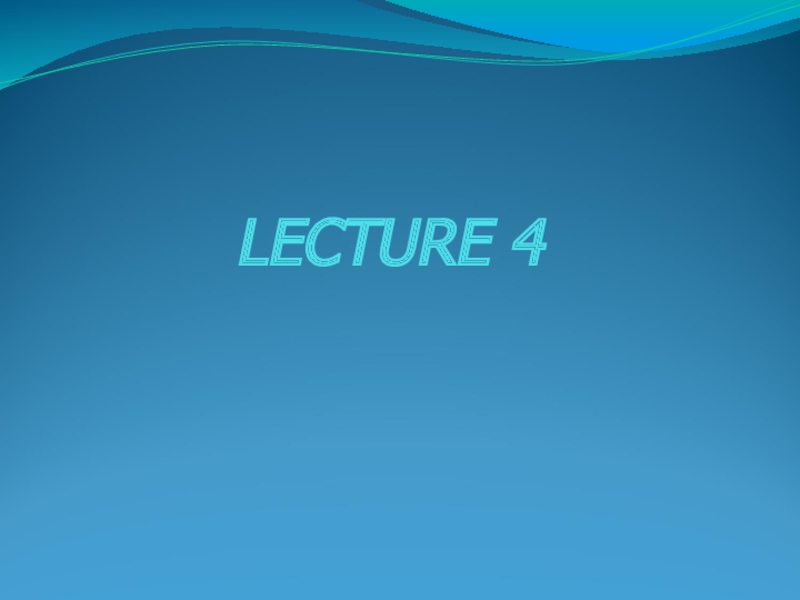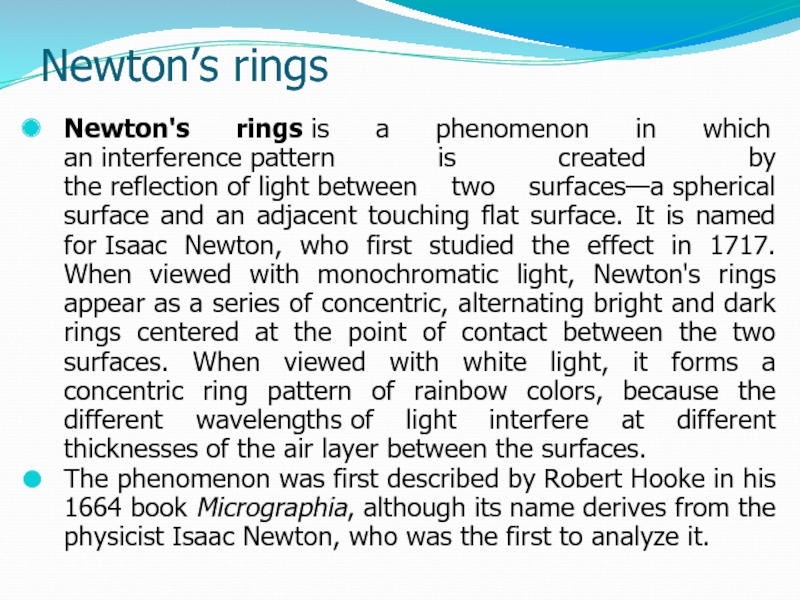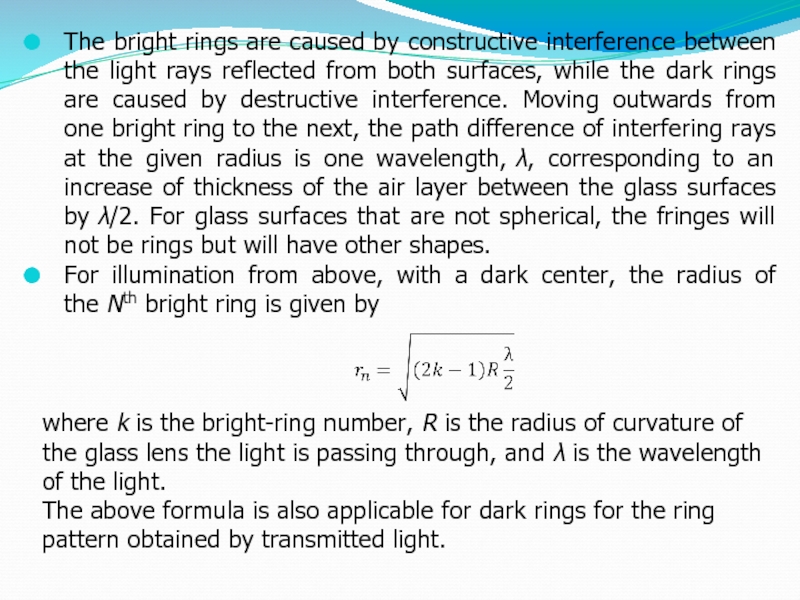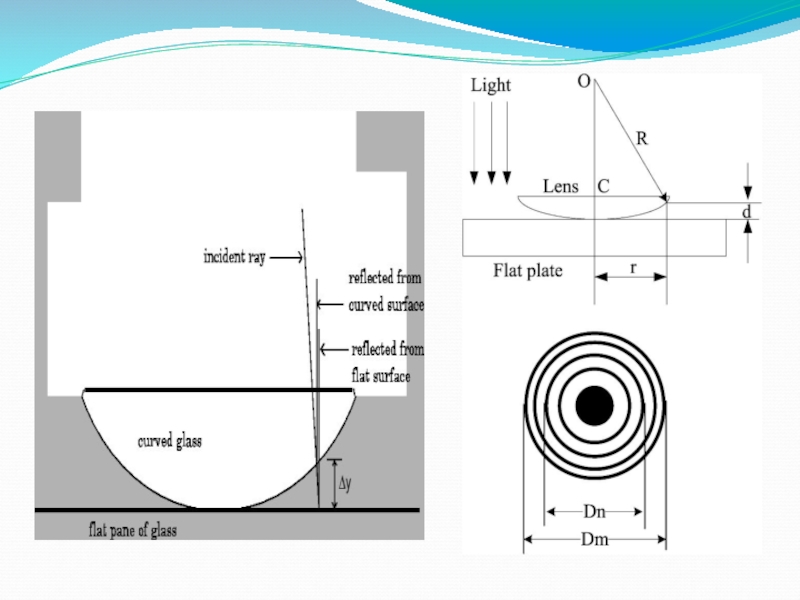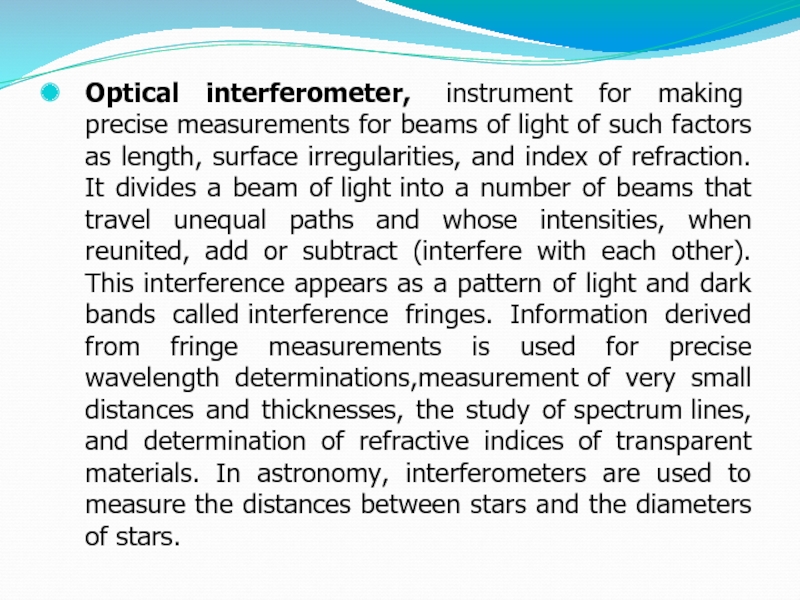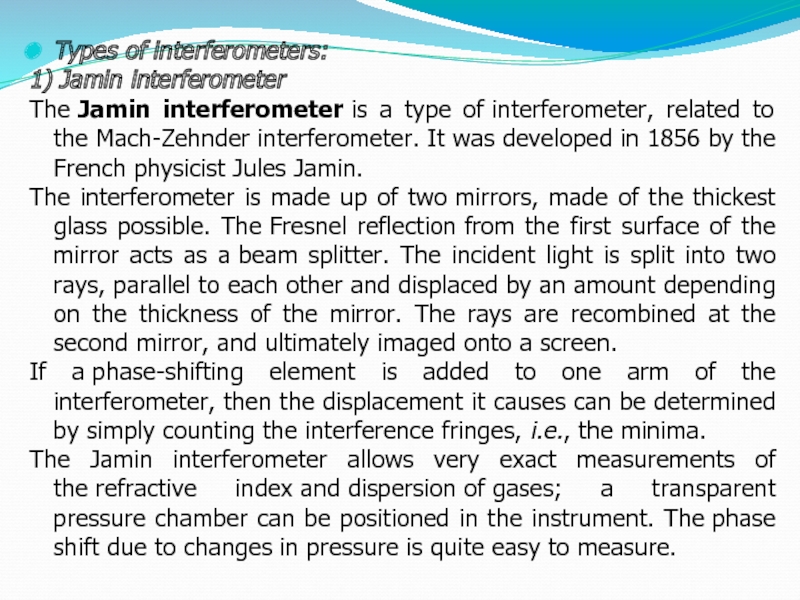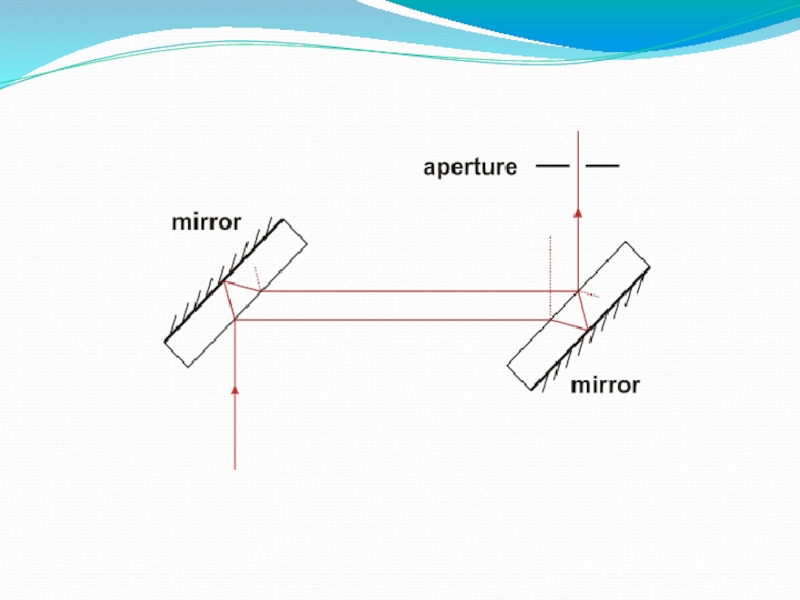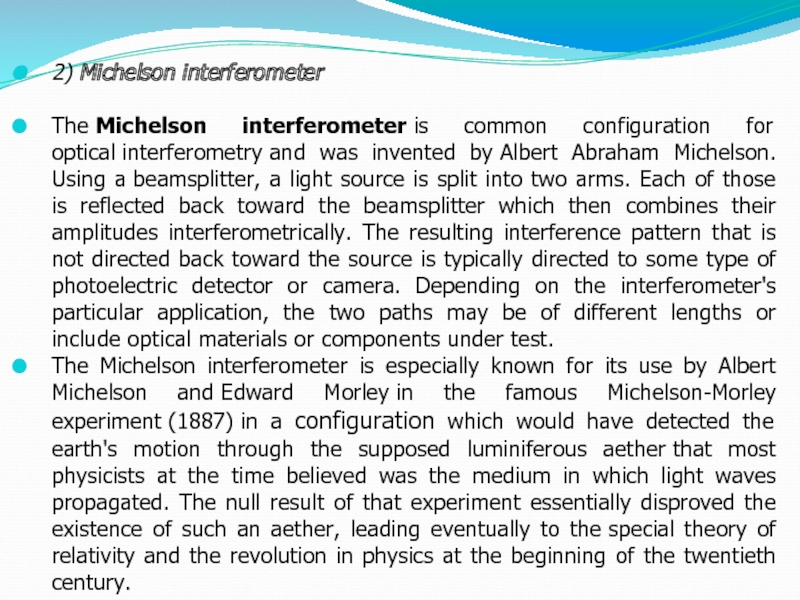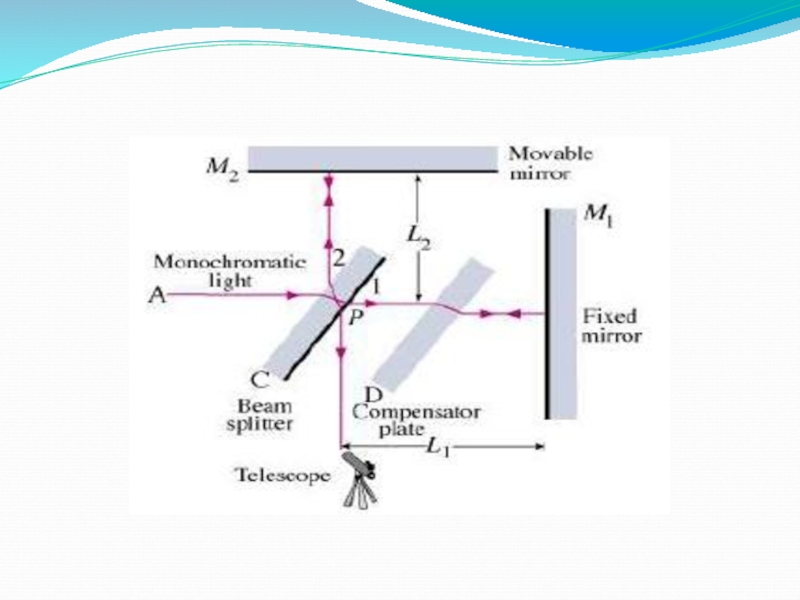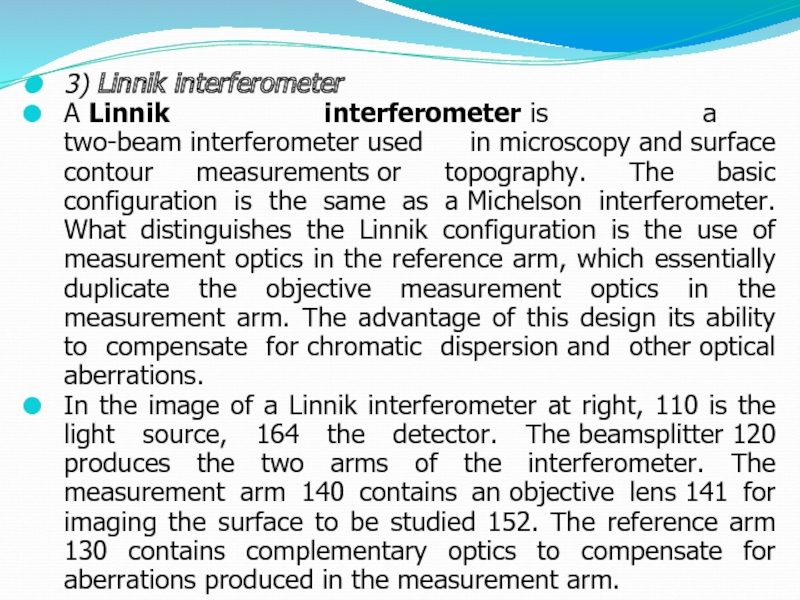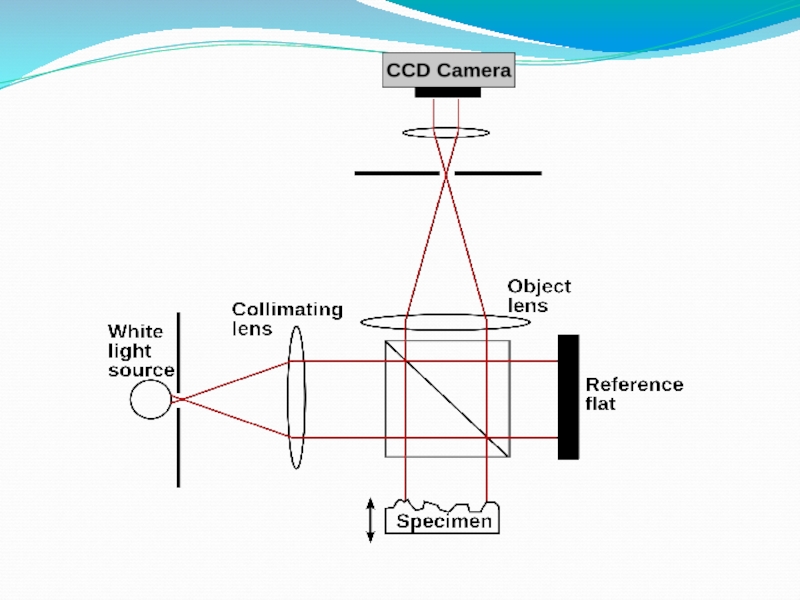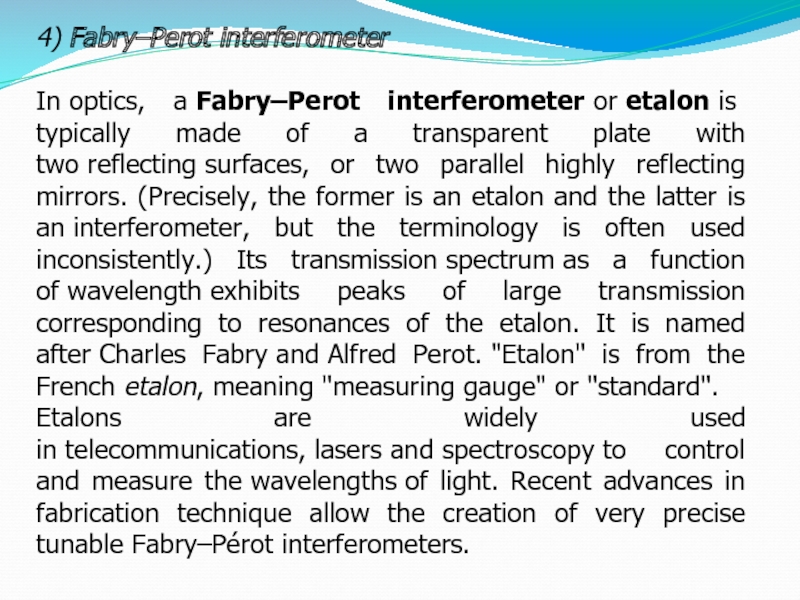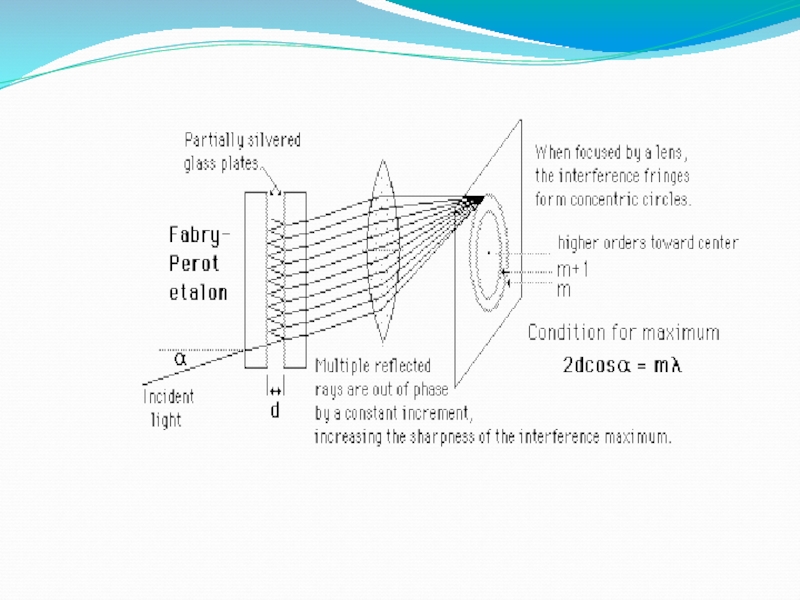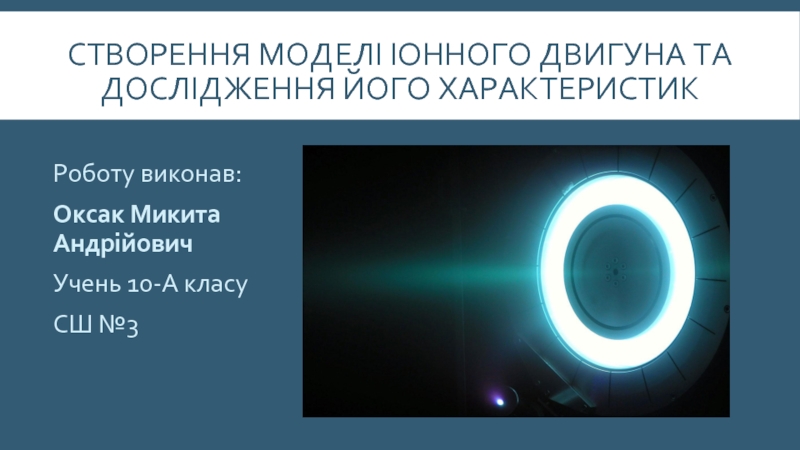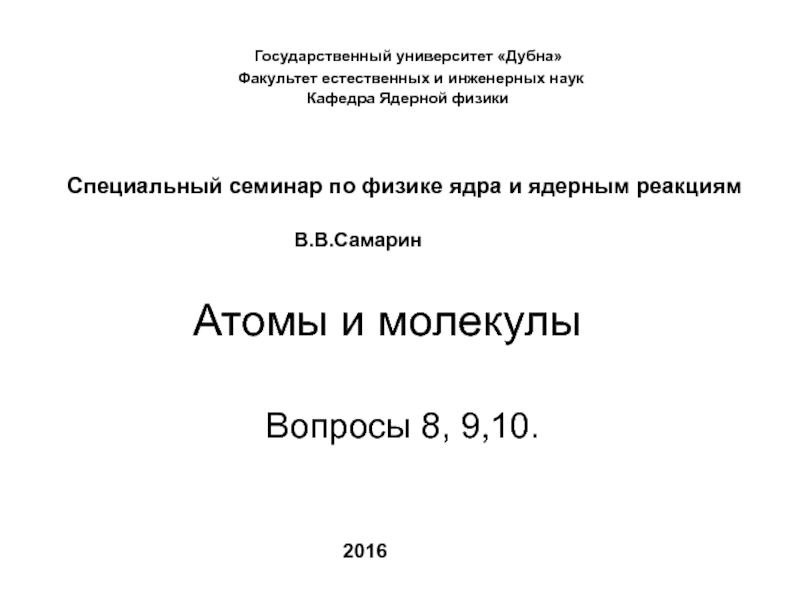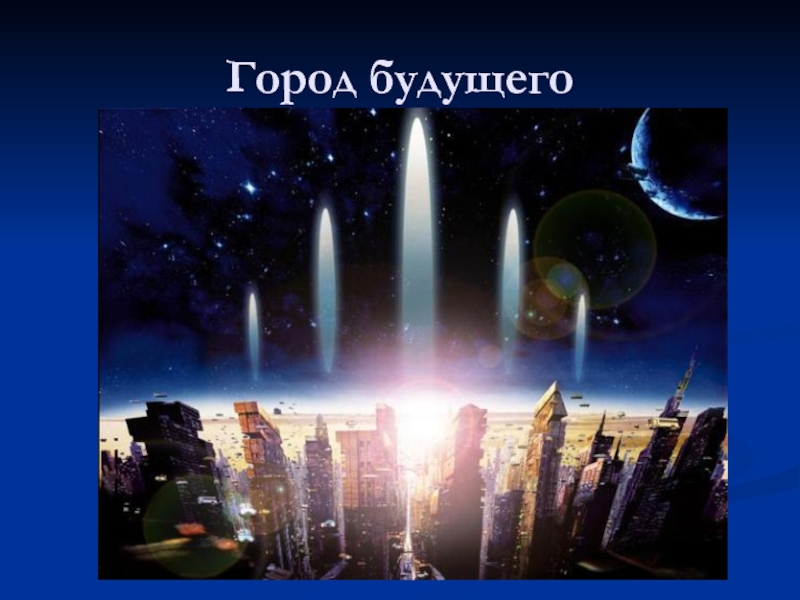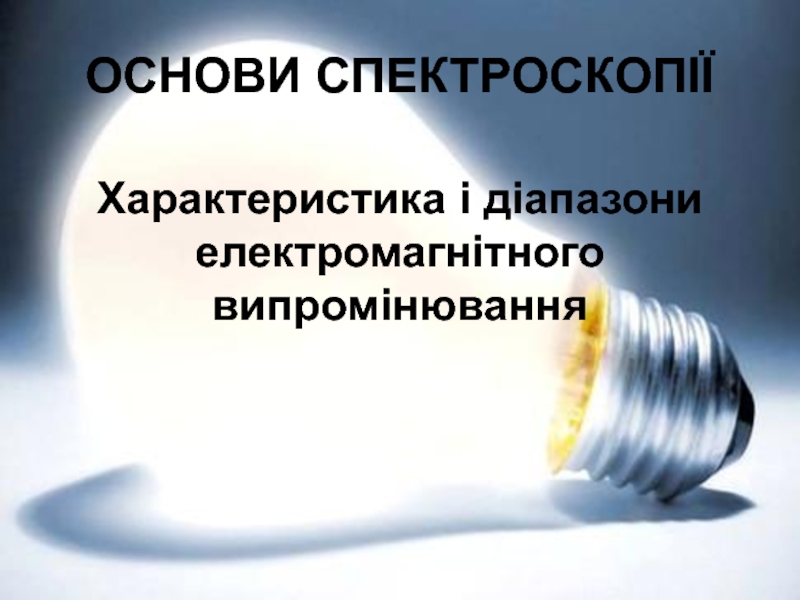- Главная
- Разное
- Дизайн
- Бизнес и предпринимательство
- Аналитика
- Образование
- Развлечения
- Красота и здоровье
- Финансы
- Государство
- Путешествия
- Спорт
- Недвижимость
- Армия
- Графика
- Культурология
- Еда и кулинария
- Лингвистика
- Английский язык
- Астрономия
- Алгебра
- Биология
- География
- Детские презентации
- Информатика
- История
- Литература
- Маркетинг
- Математика
- Медицина
- Менеджмент
- Музыка
- МХК
- Немецкий язык
- ОБЖ
- Обществознание
- Окружающий мир
- Педагогика
- Русский язык
- Технология
- Физика
- Философия
- Химия
- Шаблоны, картинки для презентаций
- Экология
- Экономика
- Юриспруденция
Newton’s rings презентация
Содержание
- 1. Newton’s rings
- 2. Newton’s rings Newton's rings is a phenomenon in
- 3. The bright rings are caused by constructive
- 5. Optical interferometer, instrument for making precise measurements
- 6. Types of interferometers: 1) Jamin interferometer The Jamin
- 8. 2) Michelson interferometer The Michelson interferometer is
- 10. 3) Linnik interferometer A Linnik interferometer is a two-beam interferometer used
- 12. 4) Fabry–Perot
Слайд 2Newton’s rings
Newton's rings is a phenomenon in which an interference pattern is created by
The phenomenon was first described by Robert Hooke in his 1664 book Micrographia, although its name derives from the physicist Isaac Newton, who was the first to analyze it.
Слайд 3The bright rings are caused by constructive interference between the light
For illumination from above, with a dark center, the radius of the Nth bright ring is given by
where k is the bright-ring number, R is the radius of curvature of the glass lens the light is passing through, and λ is the wavelength of the light.
The above formula is also applicable for dark rings for the ring pattern obtained by transmitted light.
Слайд 5Optical interferometer, instrument for making precise measurements for beams of light of such
Слайд 6Types of interferometers:
1) Jamin interferometer
The Jamin interferometer is a type of interferometer, related to
The interferometer is made up of two mirrors, made of the thickest glass possible. The Fresnel reflection from the first surface of the mirror acts as a beam splitter. The incident light is split into two rays, parallel to each other and displaced by an amount depending on the thickness of the mirror. The rays are recombined at the second mirror, and ultimately imaged onto a screen.
If a phase-shifting element is added to one arm of the interferometer, then the displacement it causes can be determined by simply counting the interference fringes, i.e., the minima.
The Jamin interferometer allows very exact measurements of the refractive index and dispersion of gases; a transparent pressure chamber can be positioned in the instrument. The phase shift due to changes in pressure is quite easy to measure.
Слайд 8
2) Michelson interferometer
The Michelson interferometer is common configuration for optical interferometry and was invented by Albert
The Michelson interferometer is especially known for its use by Albert Michelson and Edward Morley in the famous Michelson-Morley experiment (1887) in a configuration which would have detected the earth's motion through the supposed luminiferous aether that most physicists at the time believed was the medium in which light waves propagated. The null result of that experiment essentially disproved the existence of such an aether, leading eventually to the special theory of relativity and the revolution in physics at the beginning of the twentieth century.
Слайд 103) Linnik interferometer
A Linnik interferometer is a two-beam interferometer used in microscopy and surface contour measurements or topography. The
In the image of a Linnik interferometer at right, 110 is the light source, 164 the detector. The beamsplitter 120 produces the two arms of the interferometer. The measurement arm 140 contains an objective lens 141 for imaging the surface to be studied 152. The reference arm 130 contains complementary optics to compensate for aberrations produced in the measurement arm.
Слайд 12
4) Fabry–Perot interferometer
In optics, a Fabry–Perot interferometer or etalon is typically made of a transparent plate
Etalons are widely used in telecommunications, lasers and spectroscopy to control and measure the wavelengths of light. Recent advances in fabrication technique allow the creation of very precise tunable Fabry–Pérot interferometers.
